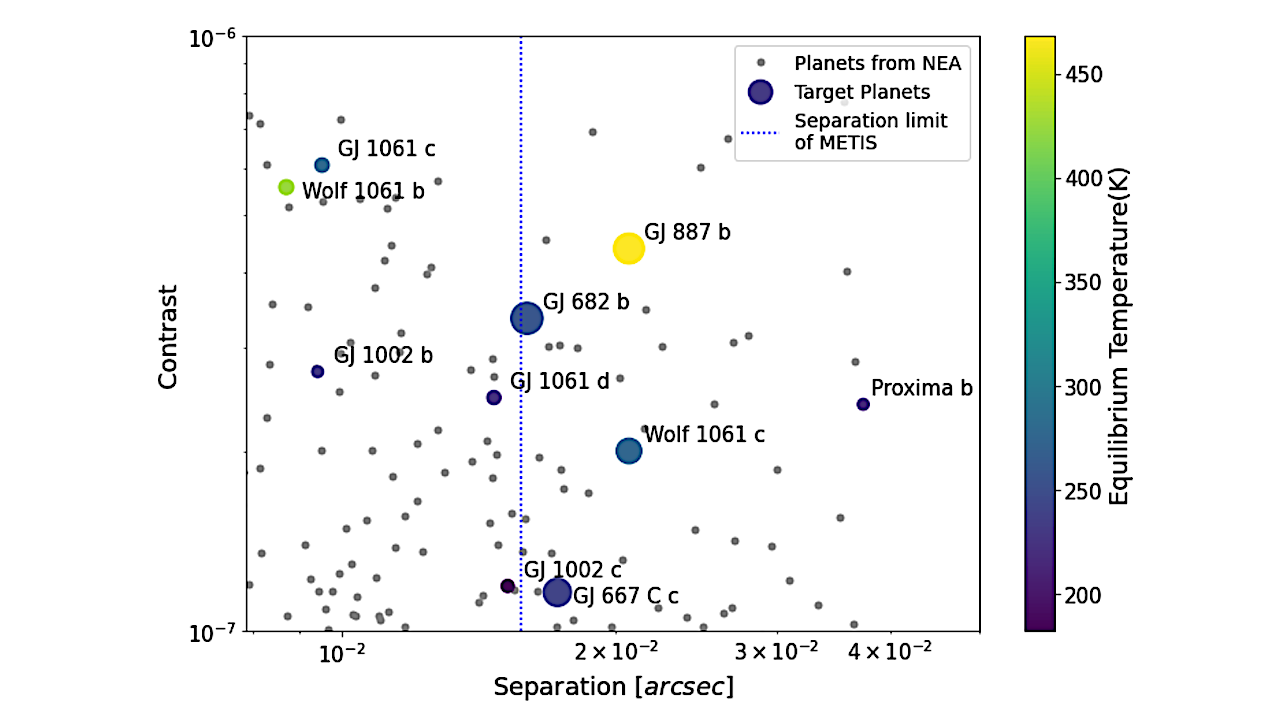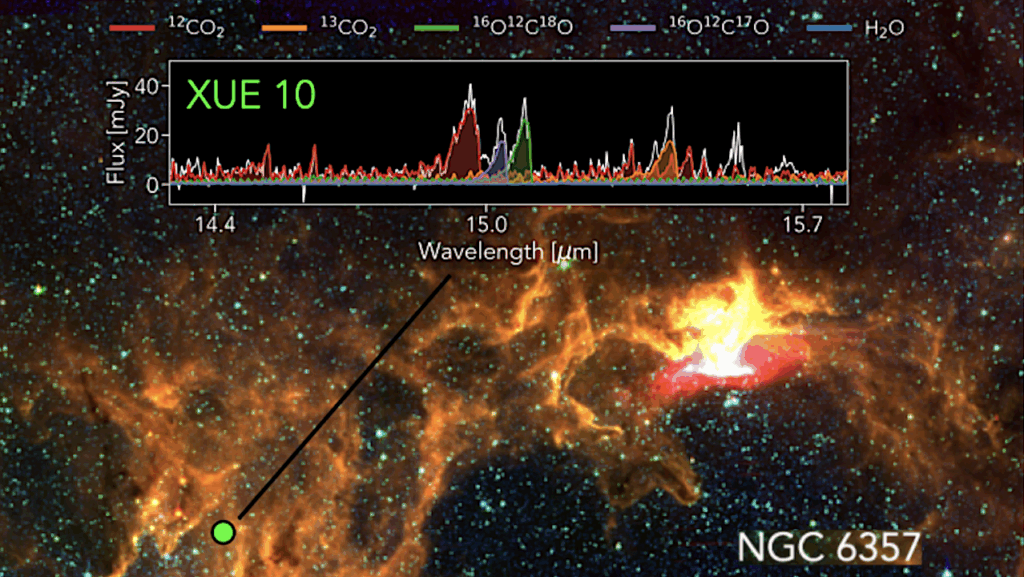Detecting Biosignatures in Nearby Rocky Exoplanets using High-Contrast Imaging and Medium-Resolution Spectroscopy with Extremely Large Telescope

In the upcoming decades, one of the primary objectives in exoplanet science is to search for habitable planets and signs of extraterrestrial life in the universe.
Signs of life can be indicated by thermal-dynamical imbalance in terrestrial planet atmospheres. O2 and CH4 in the modern Earth’s atmosphere are such signs, commonly termed biosignatures. These biosignatures in exoplanetary atmospheres can potentially be detectable through high-contrast imaging instruments on future extremely large telescopes (ELTs).
To quantify the signal-to-noise (S/N) ratio with ELTs, we select up to 10 nearby rocky planets and simulate medium resolution (R ∼ 1000) direct imaging of these planets using the Mid-infrared ELT Imager and Spectrograph (ELT/METIS, 3-5.6 μm) and the High Angular Resolution Monolithic Optical and Near-infrared Integral field spectrograph (ELT/HARMONI, 0.5-2.45 μm).
We calculate the S/N for the detection of biosignatures including CH4, O2, H2O, and CO2. Our results show that GJ 887~b has the highest detection S/N for biosignatures and Proxima Cen b exhibits the only detectable CO2 among the targets for ELT/METIS direct imaging.
We also investigate the TRAPPIST-1 system, the archetype of nearby transiting rocky planet systems, and compare the biosignature detection S/N of transit spectroscopy with JWST versus direct spectroscopy with ELT/HARMONI. Our findings indicate JWST is more suitable for detecting and characterizing the atmospheres of transiting planet systems such as TRAPPIST-1 that are relatively further away and have smaller angular separations than more nearby non-transiting planets.
Huihao Zhang, Ji Wang, Michael K. Plummer
Comments: 19 pages, 5 figures; Accepted to The Astronomical Journal
Subjects: Earth and Planetary Astrophysics (astro-ph.EP); Instrumentation and Methods for Astrophysics (astro-ph.IM)
Cite as: arXiv:2311.18117 [astro-ph.EP] (or arXiv:2311.18117v1 [astro-ph.EP] for this version)
Submission history
From: Huihao Zhang
[v1] Wed, 29 Nov 2023 22:12:38 UTC (396 KB)
https://arxiv.org/abs/2311.18117
Astrobiology








